
Roseau, Commonwealth of Dominica, West Indies

 |
Dominica Botanic Gardens Roseau, Commonwealth of Dominica, West Indies |
 |
| © Dominica Academy of Arts and Sciences, Dec. 2004 | Home Page | Comments & Suggestions |Site Coordinator | Gardens Curator |
| Selected Trees and Shrubs: Thespesia populnea; Syn.: Hibiscus populneus; Common name: Mahot LaMer, Portia Tree |
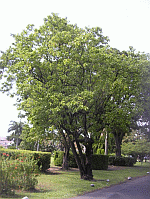
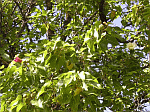
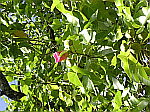
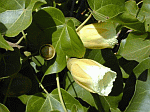
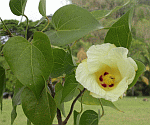
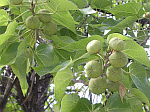
|
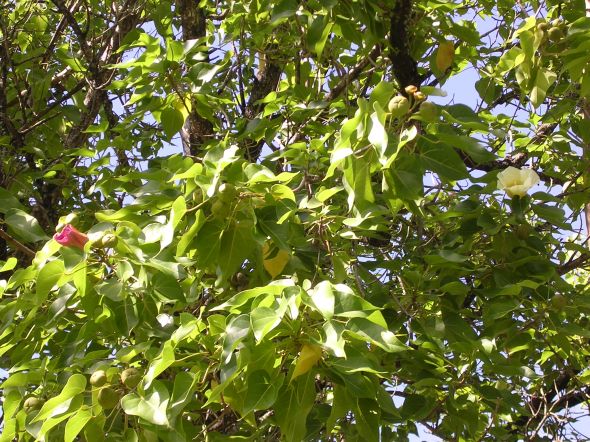 Davison Shillingford Plant Family: Belongs to the Malvaceae or Hibiscus family, which includes the many varieties of the popular Hibiscus flower (Hibiscus rosa-sinensis), the edible Okra (Hibiscus esculentus), and Sea Island Cotton (Gossypium barbadense). Description: Small, hardy, spreading, evergreen shrub or tree, up to 12 m tall (40 ft); leaves heart-shaped, shiny and alternate, blade up to 22 cm long (8 in) and 11 cm broad (4 in); flowers solitary and axillary, funnel-shaped and showy, 5-8 cm long (2-3 in) and up to 8 cm across (3 in), yellow becoming purple with age, with red or purple base inside petals; fruit depressed-globose, 3-4 cm broad (1.2-1.6 in), faintly 5-angled, with yellow sap; flowering and fruiting intermittently throughout year. Natural Habitat: Tropical coastal regions on sandy or gravelly shores and at mangrove margins; especially suited to sea coasts; propagation by cuttings and seed; fruit and seed buoyant and adapted to long-distance dispersal by tides and ocean currents. Origin and Distribution: Native of old World tropics; and now found in coastal regions throughout tropics and sub-tropics; naturalised in Florida and West Indies; in Dominica, found at Cabrits and Pointe Round. Uses: As specimen ornamental, and in medians and parking lots; tough fibrous bark used for rope and caulk for boats; wood is oily and makes highly polished timber, but makes only small items since wood is often twisted and rarely found in large pieces; yellow dye obtained from fruit; medicinally, several plant parts used: ground up bark to treat skin diseases, dysentery and hemorrhoids; leaves applied to inflamed and swollen joints; sap of young fruit to treat ringworm and other skin diseases; roots for making a tonic; in Dominica, leaves soaked in Castor oil and applied to open ulcers; there is some modern investigation of the plant's effects on high blood pressure.
Indigenous Legends: Tahitians considered the tree sacred and grew it near places of worship.
References: |
| © Dominica Academy of Arts and Sciences, Dec. 2004 | Home Page | Comments & Suggestions |Site Coordinator | Gardens Curator |